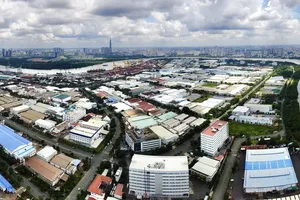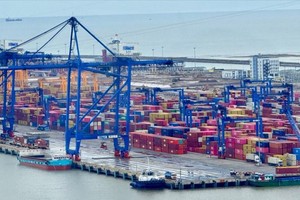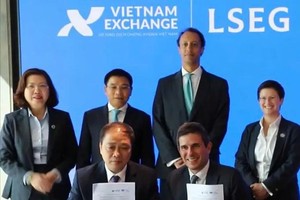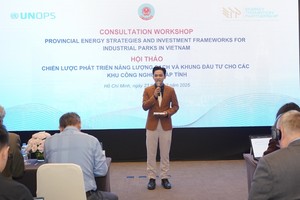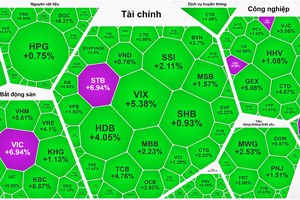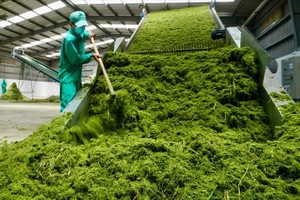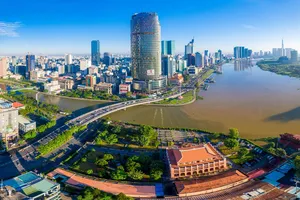However, this journey is challenging, given the numerous difficulties faced by the aviation sector in general and domestic airlines in particular.
Positive developments
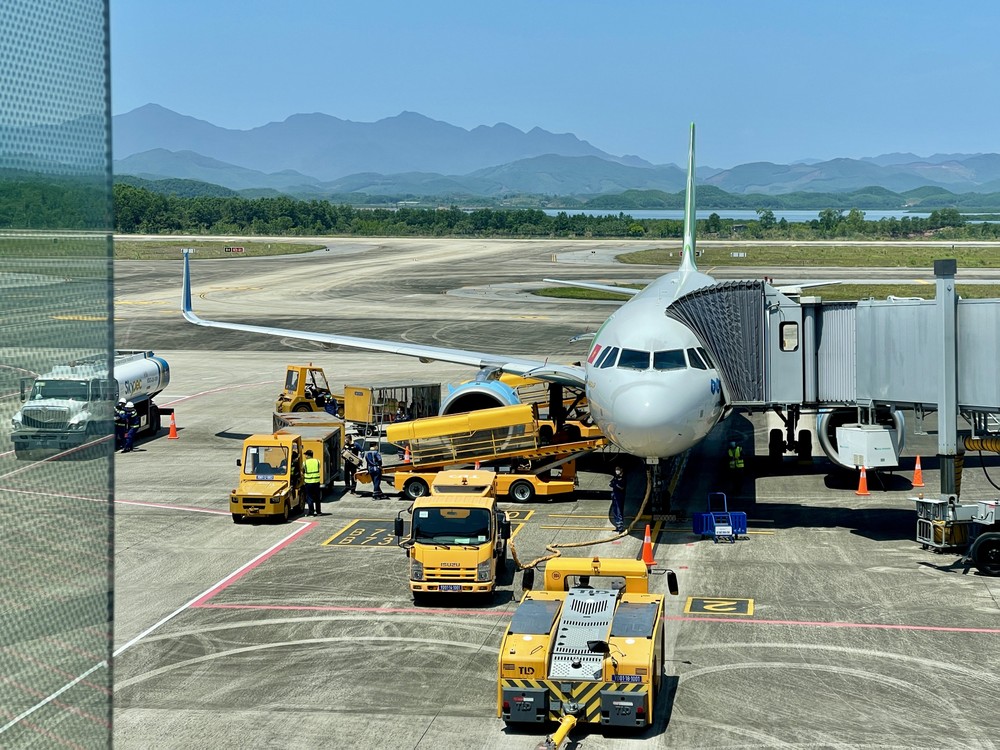
The International Air Transport Association (IATA) reports that achieving net-zero emissions is a key goal for its 320 member airlines. In Vietnam, the three major airlines—Vietnam Airlines, VietJet Air, and Bamboo Airways—are all IATA members and are committed to pursuing this Net Zero objective.
Since 2018, Vietnam Airlines, the national flag carrier, has implemented single-engine taxiing to reduce noise at airports and lower fuel consumption, which in turn reduces emissions. Deputy General Director Dang Anh Tuan stated that after five years of implementing this solution, Vietnam Airlines has reduced carbon dioxide emissions by over 4,000 tons. Additionally, the airline's investment in new aircraft has yielded promising results in its emissions reduction efforts. The fleet now includes nearly 100 aircraft, with five Boeing 787-10s, 11 Boeing 787-9s, and 14 Airbus A350s.
The new-generation aircraft are designed to be environmentally friendly, featuring advanced technology that reduces fuel consumption and emissions by 25 percent per seat compared to previous models. In 2023 alone, through optimized aircraft operations and fuel-saving initiatives, Vietnam Airlines cut its carbon dioxide emissions by nearly 70,000 tons—more than 1.5 times the reduction achieved in 2022, which was 44,240 tons.
Recently, Vietnam Airlines became the first airline in Vietnam to use Sustainable Aviation Fuel (SAF) for commercial passenger flights. The airline also signed a cooperation agreement to join the carbon dioxide emissions measurement project developed by IATA. Under this agreement, Vietnam Airlines will provide data for IATA to calculate average emissions per passenger for each route and aircraft type.
Similarly, VietJet Air has also operated low-carbon dioxide emission flights and invested in a new, modern, fuel-efficient fleet. By the end of 2024, VietJet plans to add ten new-generation aircraft, primarily the latest Airbus A321neo ACF models.
VietJet currently operates a fleet of over 100 modern aircraft. These planes can reduce fuel consumption by at least 16 percent, cut noise by up to 75 percent, and lower emissions by 50 percent compared to older models. Bamboo Airways' passenger fleet currently includes only eight A320/321 aircraft, but this number is expected to increase to 12-15 by the end of the year, with these models also being fuel-efficient and environmentally friendly.
Challenges remain
Minister of Transport Nguyen Van Thang highlighted that Vietnamese airlines have been actively involved in carbon emission reduction efforts within the civil aviation sector, regularly updating and reporting to the International Civil Aviation Organization (ICAO). However, these are only the initial steps in a lengthy process that demands substantial effort from the entire industry, especially from the airlines. Despite a fairly positive recovery outlook for the aviation sector, the goal of achieving net-zero emissions faces significant challenges.
According to IATA, while the efforts of airlines to reach net-zero emissions by 2050 are commendable, the most critical factor is the adoption of SAF. This fuel can reduce carbon emissions by up to 80 percent compared to traditional jet fuel. However, SAF is currently both scarce and prohibitively expensive, with production costs two to three times higher than those of fossil-based fuels.
Experts point out that reducing emissions in the aviation sector, including investing in fleet upgrades and adopting SAF, is costly. Recently, Air New Zealand became the first major airline globally to abandon its 2030 emission reduction target due to the high costs and difficulties associated with acquiring new aircraft and SAF.
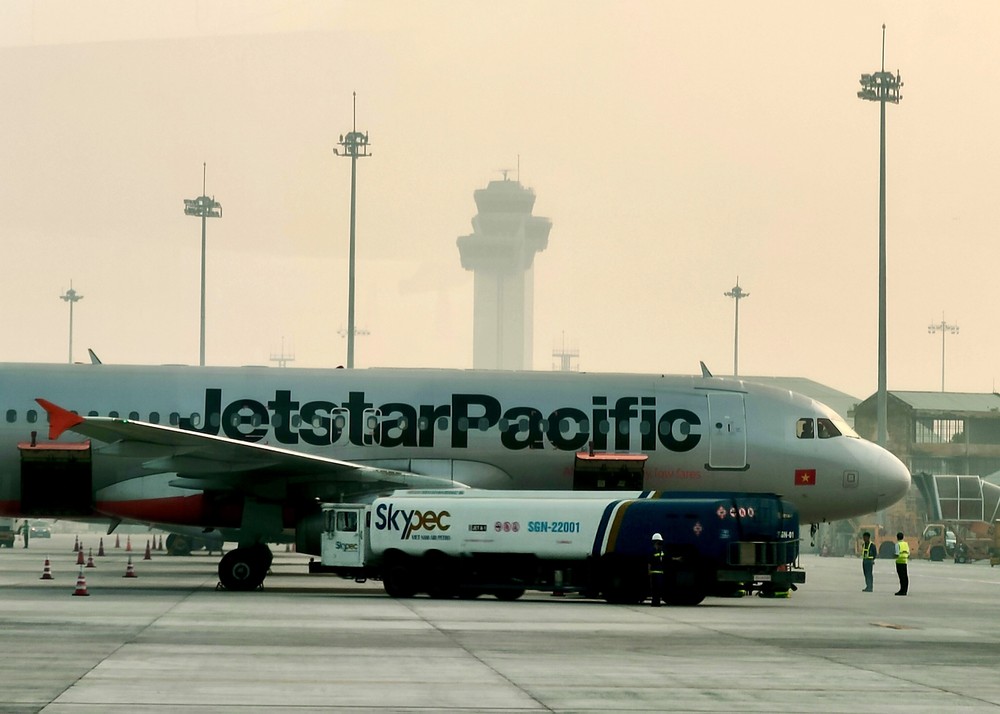
Mr. Do Hong Cam, Deputy Director of the Civil Aviation Authority of Vietnam, noted that Vietnamese airlines are also facing significant challenges such as rising fuel costs, exchange rate fluctuations, and a shortage of aircraft. The increase in fuel prices and exchange rate fluctuations alone has added VND10 trillion to Vietnam Airlines' costs compared to 2019. This does not include higher aircraft leasing costs and the recall of planes for engine repairs, which has reduced the fleet by 40-45 aircraft compared to 2023. These challenges have led to higher ticket prices.
Statistics indicate that since 2019, airfares have generally been rising across most regions. In Vietnam, ticket prices increased by about 15-17 percent at the beginning of 2024 compared to the same period last year, depending on the route, travel date, and time. Global airfare is expected to rise by 3-7 percent in 2024 and continue increasing in the coming years. Given this situation, investing in emission reduction becomes even more difficult.
Airline representatives have called for State management agencies to implement mechanisms and policies to make sustainable fuels more widely available and cost-effective. In the meantime, Vietnamese airlines are working to adopt environmentally friendly practices in all aspects of their operations and are encouraging passengers to minimize waste during their travels.
According to the Ministry of Transport, the roadmap for transitioning to green energy in aviation is outlined in Decision No.876/QD-TTg dated July 22, 2022. This decision approves the action plan for green energy transition and the reduction of carbon and methane emissions in the transport sector.
Accordingly, from 2027, relevant agencies will explore the use of alternative fuels in aviation. By 2030, a comprehensive database on energy use and fuel consumption by aviation enterprises will be established. From 2035, some short-haul flights will use at least 10 percent sustainable fuel, and 100 percent of new airport passenger and service vehicles will operate on electricity or green energy. By 2050, all aircraft will be converted to use green energy and sustainable aviation fuel to reduce greenhouse gas emissions significantly.

